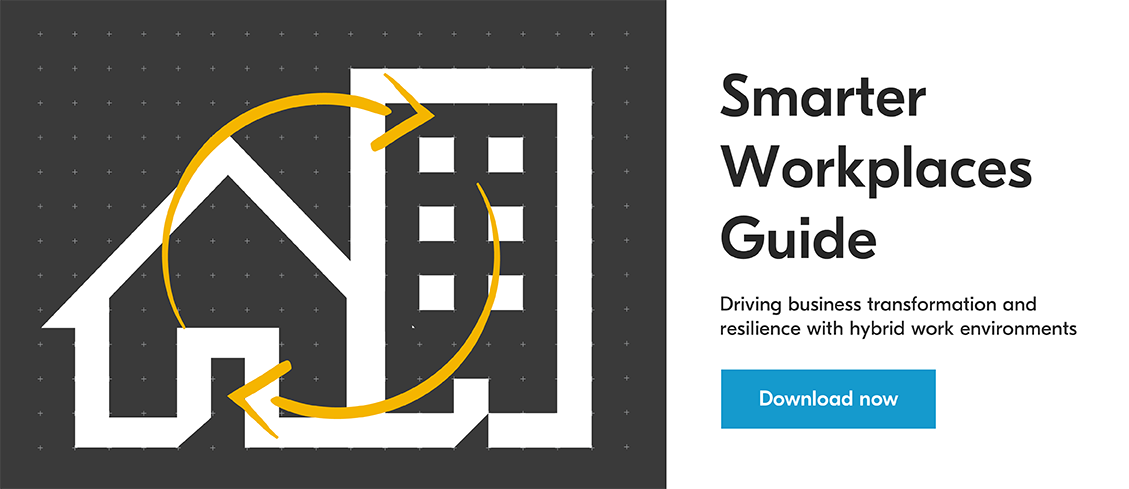
Without a doubt, the COVID-19 pandemic has ousted the traditional office setup from its chief status as "the way we work". More than ever before businesses across the world are experimenting with new ways to operate, new methods of collaboration, and most importantly, safe and healthy systems of working together.
Many organisations are seeing the benefits of mixing in-person (but socially distant) teamwork with the flexibility of remote work. This hybrid work environment allows for the employees to work from home (or anywhere) routinely, or to come into the office as required for co-located work.
Due to the acceleration of remote working and the shift towards a hybrid office model, businesses are assessing how their print needs are evolving. As your organisation changes and your new hybrid workspace evolves, there are certain printer features to look out for when you consider your next purchase. Let's explore:
Explore printer features
1. Security
Concerns about remote print security are not new, and they remain high on the agenda for the hybrid office. Unsurprisingly there are particular concerns about the security of information being printed on home devices. With remote work here for the long run, it's vital to set employees up with secure at home printing. Look out for security features such as:
- Local and network authentication
- Data encryption
- Overwrite-erase
- Password access
Of course, it's not only home devices that require particular security features. Ensure you properly secure your in-office print environment as well with features like:
- User authentication and authorisation
- Secure communication protocols
- Stored data protection
- Data overwrite function
- Network monitoring
2. Cloud capability
The hybrid workplace is the new 'normal' print environment. Therefore, the demand for solutions that can effectively and efficiently scale to meet the needs of a hybrid office and provide the levels of availability expected for such a workforce are clear. Cloud capability is a must-have feature of any printer within the hybrid workspace so employees are able to print or scan from wherever they may be working, this feature also enables works at home to print directly to the office printer too.
3. Multi-function capacity
With more remote working, it is expected that office space footprints will reduce. Possibly one of the best advantages of a multifunctional printer is the space savings granted by the device. Rather than needing space for a printer, photocopier, fax machine and scanner, the hybrid office can have the same functionality in just a single machine.
4. Mobile friendly and touchless tech
Now more than ever, businesses require the freedom to print and scan using mobile devices like tablets and smartphones and to do so without the need to touch a shared device. Not only is this a convenient and time-saving feature, but touchless technology is also mitigating virus transmission risk. Printer features like pull-printing through smart-card authentication or even facial or voice recognition will assist the hybrid office remain and a safe and healthy place to work.
5. An automatic document feeder
In the same vein, a device with an automatic document feeder (ADF) will reduce the amount of touching required. An ADF will allow a ream of paper to be put into the machine and which is then automatically fed through the device, allowing the user to print, scan or copy without manually placing each page.
6. High workload capacity
A hybrid work environment is based on productivity and efficiency, so it stands to reason that a printer with a high workload capacity is a necessity. Also, consider choosing a machine with large print volume capability to avoid unnecessary touching and the follow-up sanitisation required.
7. Low running costs
The price tag on your printer isn't the only cost worth noting; the total cost of ownership (TCO) includes:
- Physical hardware, e.g. the device itself
- Printing, e.g. toner and paper
- Running costs, e.g. energy consumption and maintenance
Low running costs will keep the hybrid office budget in check to ensure maximum profitability in uncertain times.
Building a resilient and productive hybrid work environment requires the right hardware, software and processes. Download our Smarter Workplaces Guide for a step-by-step strategy for implementing an effective hybrid work model that equips your employees to work anywhere, any time.
Kyocera Document Solutions provides innovative products, software and ICT services for hybrid work environments, enabling businesses to implement smart workplace solutions that drive business transformation and resilience.








